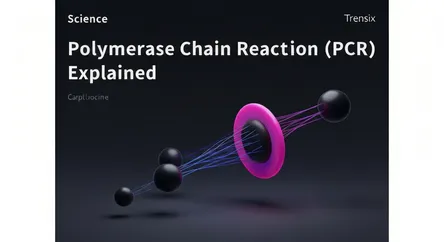Science
Polymerase Chain Reaction (PCR) Explained

An essential guide to the Polymerase Chain Reaction (PCR), the technique that rapidly copies DNA for diagnostics, forensics, and research.
What is it?
Polymerase Chain Reaction (PCR) is a revolutionary laboratory technique used to make millions to billions of copies of a specific DNA segment. Invented in 1983 by Kary Mullis, who later won the Nobel Prize for this work, this method is sometimes called "molecular photocopying." It works by repeatedly heating and cooling a sample in a process called thermal cycling. This process separates the DNA strands and then uses an enzyme called DNA polymerase to build new, identical strands. This amplification allows scientists to take a very small amount of DNA and produce enough of it to be analyzed in detail.
Why is it trending?
PCR is a cornerstone of modern molecular biology and medicine. Its ability to amplify trace amounts of genetic material makes it indispensable for a vast range of applications. It gained significant public attention as the "gold standard" for detecting the SARS-CoV-2 virus during the COVID-19 pandemic. Beyond virology, PCR is critical in genetic testing for inherited diseases, DNA fingerprinting for forensic science, and paternity testing. Its speed, sensitivity, and reliability have made it a fundamental tool in research labs, clinical diagnostics, and applied sciences worldwide.
How does it affect people?
PCR technology directly impacts human health and society. In medicine, it enables the early and accurate diagnosis of infectious diseases like HIV and tuberculosis, often before symptoms appear, which is crucial for effective treatment and preventing spread. It's used to screen for genetic disorders and detect mutations that can lead to cancer. In the justice system, PCR-based DNA fingerprinting is vital for identifying suspects at crime scenes and exonerating the innocent. The technique is also used in food safety to detect pathogens and in agriculture for genotyping plants.